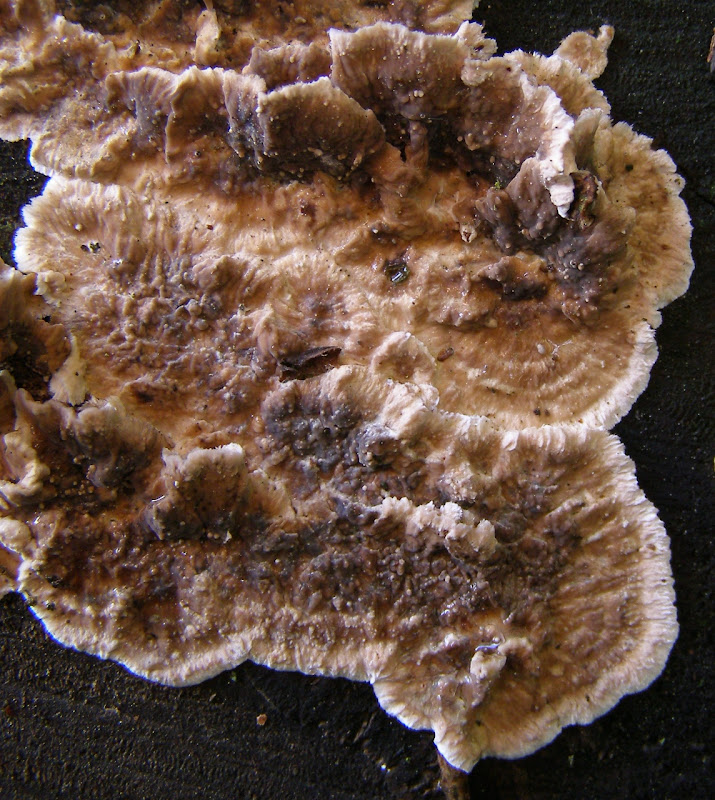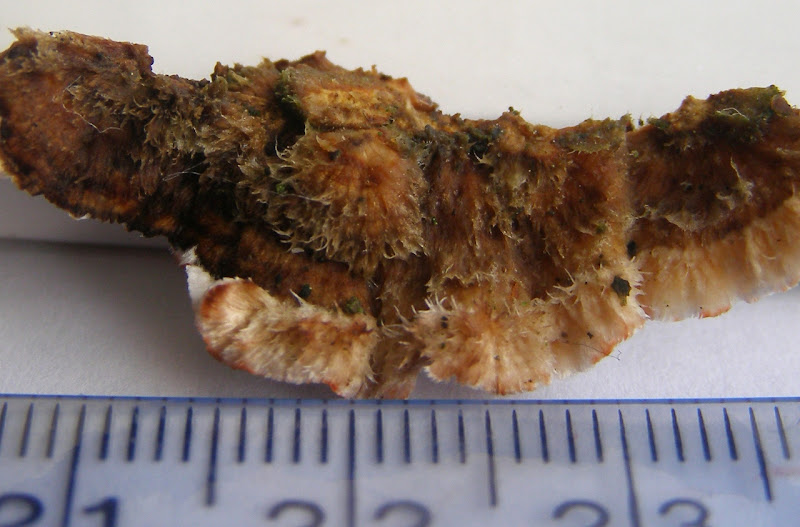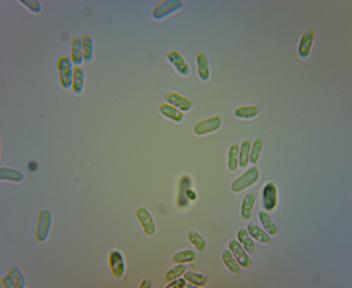
Crust fungus Stereum sanguinolentum growing on the cut end of a conifer log.
Back in March while taking a short cut from my usual walk, I noticed this interesting-looking crust fungus growing on a conifer log near Wessex Hall. Initially I thought it might be a brownish variant of Chondrostereum purpureum but the sample I took was too dried out to give any spores and didn't show any other distinguishing features so I didn't pursue the matter any further.
Yesterday morning I happened to be passing that way again and noticed the fungus was still there so I took these photos.

I also took a sample of one of its brackets. The upper surface of the bracket is hairy:

The lower surface is smooth and lacks any visible pores:

Note also that where the lower surface has been accidentally bruised it has turned red. The only crust fungus that bleeds red and grows on conifers is Stereum sanguinolentum. The above sample also bled when I deliberately cut it. The sample I took back in March must have been too dried out to even bleed.
When left 24 hours over a microscope slide the lower surface gave the following spores (magification x600, field width about 86um):

These spores are about 6.5 x 2.5um which is at the lower end of the range (6-)7-10(-10.5) x (2-) 2.5-3(-3.5) um given for Stereum sanguinolentum at this page at MycoBank.
[Note added 2013-12-30: the log on which it was growing was most probably cut from a nearby cedar (Cedrus libani).]
First 2 photos and specimen taken in Whiteknights Park, Reading, UK, on 2013-12-25.
 Sun 2013-12-29
Sun 2013-12-29 